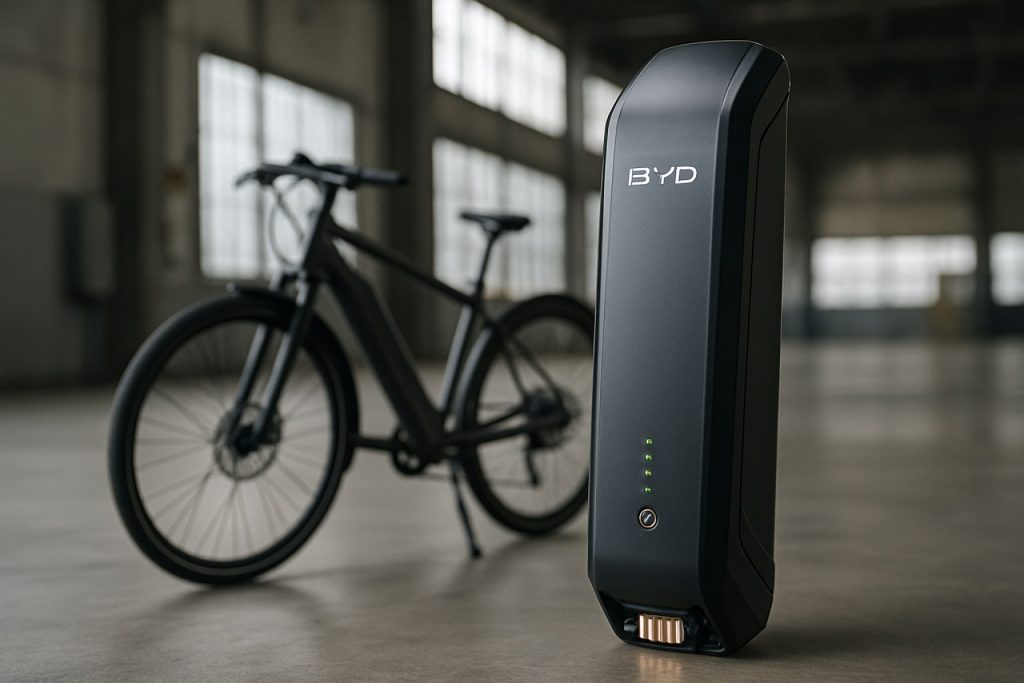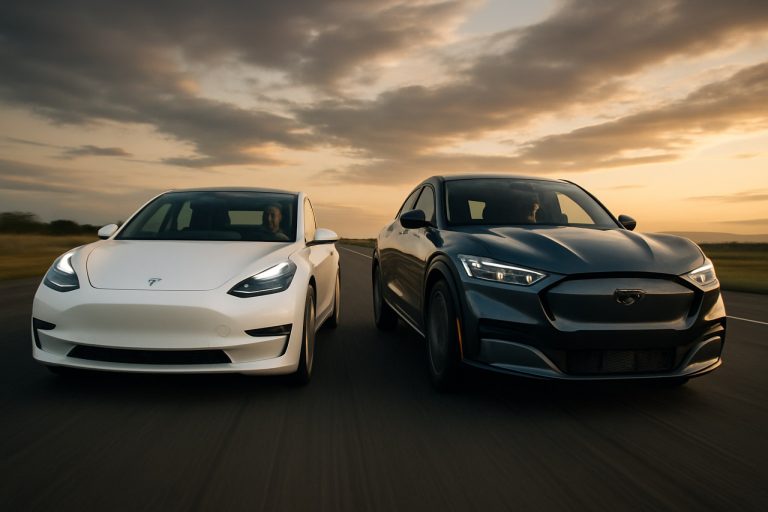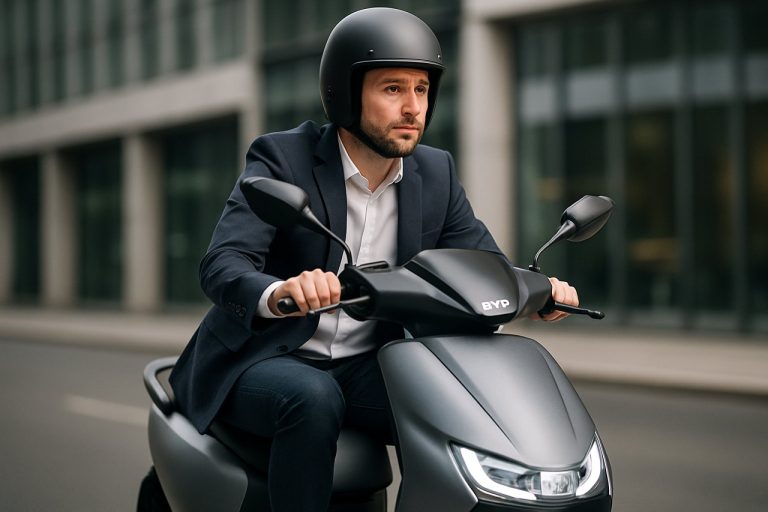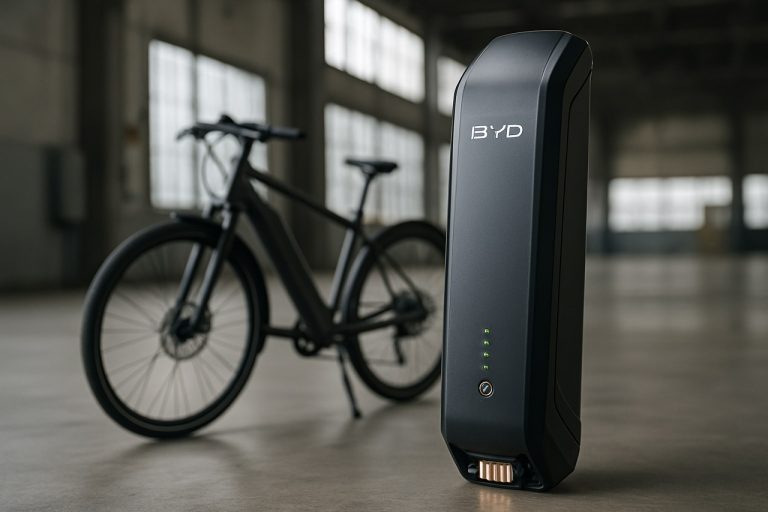
- Electric two-wheeled vehicles are essential urban transport in China, with over 400 million in use and sales expected to reach 70 million globally in 2024.
- Battery reliability remains a core challenge, with current e-bike batteries often needing replacement every 3–5 years due to quick degradation and safety risks.
- BYD has launched advanced lithium iron phosphate (LiFePO4) “blade batteries” for e-bikes, promising longer life, enhanced safety, smart management, and cold-weather durability.
- Upcoming Chinese safety regulations and government trade-in programs are set to boost demand for high-quality battery replacements.
- BYD’s market entry is compelling industry-wide upgrades, forcing both premium and low-cost brands to improve or risk falling behind.
- Delivery riders and daily commuters benefit most as safer, longer-lasting batteries support reliable, accident-free operation.
Across China’s humming cities and dusty provincial roads, electric two-wheeled vehicles have become the lifeblood of daily movement. Nearly every street thrums with the subtle whine of electric scooters, mopeds, and delivery bikes—a phenomenon mirrored to different degrees across Europe, Southeast Asia, and even parts of Africa. Yet, a single truth underlies the quiet revolution: the battery is both the beating heart and the Achilles’ heel of this new mobility.
Enter BYD, the automotive giant that rarely sits still. This May, the company, celebrated for rewriting the rules of the automobile world, unveiled a new arsenal—advanced batteries crafted specifically for two- and three-wheeled vehicles. With that declaration, BYD signaled its intent to become a commanding force not just in family sedans and buses, but also in powering the everyday rides of millions.
The numbers demand attention. In 2024, worldwide shipments of electric two-wheelers are predicted to hit 70 million units—up nearly 4% from the previous year. Astonishingly, China alone will buy about 80% of those. In China, annual sales approach 50 million, and nationwide ownership has soared past 400 million vehicles. These are not idle toys, but essential links in the chain of urban commerce, daily commutes, and last-mile deliveries.
But with great numbers come nagging challenges. Most e-bikes rely on batteries that deteriorate swiftly, often needing replacement within three to five years. Consumers and fleet operators have grown impatient with short life spans, safety hazards, and lackluster performance. The issue is so acute that in 2025, China will introduce tighter national safety standards for batteries in e-bikes—a clear sign of regulatory momentum. Meanwhile, a government-backed “old-for-new” trade-in scheme, set to expand next year, is likely to fuel explosive demand for high-quality battery replacements.
Why strike now? Some companies chase headlines, others chase markets. BYD seems to do both—with precision. For years, the company quietly supplied batteries to notable brands, collaborating with shared-mobility startups and vehicle manufacturers behind the scenes. From 2020, it provided lithium batteries for Didi’s bike-sharing service. Strategic partnerships deepened, their “car-grade” technology gradually flowing into the lighter vehicles realm. Now, BYD has chosen to step from backstage into the glaring spotlight.
This calculated timing is no accident. Industry insiders expect the new standards and influxes of subsidy-fueled purchases to spark fierce competition. In a market historically roiled by quality inconsistencies—especially notorious with older lead-acid batteries—BYD’s entrance brings credibility and heft. Its signature blade battery technology, known for its long life, smart management, cold-weather resilience, and high safety, is poised to elevate expectations across the sector.
Unsettling the status quo
The impact will be seismic. When BYD champions the transition from lead-acid to lithium iron phosphate (LiFePO4) batteries—as it has with its “out with the old, in with the new” mantra—the industry feels a tremor. Blade batteries feature real-time thermal management and smart monitoring, reducing fire risks and extending usable life. Traditional brands, long content to focus on price or superficial features, now find themselves compelled to innovate or perish. Lower-tier manufacturers may struggle to compete, while premium brands could leverage BYD’s platform for further advantage.
There is something quietly radical about BYD’s move. The company’s history is not just about vehicles, but about reengineering power—the core energy solutions that shape how we live and travel. As stricter safety rules loom, and as riders from everyday commuters to gig economy workers demand reliability, BYD’s battery expertise becomes a potent disruptor.
Delivering for those who deliver
For the armies of couriers who crisscross Chinese cities, the stakes could not be higher. Full-time food delivery riders log upward of 300 kilometers each day, often battling with aging, unpredictable batteries. Tales of overheating and even battery fires have underscored the dangers: A notorious 2023 fire in Hangzhou, caused by a malfunctioning battery, remains a fresh wound for many. For these essential workers, BYD’s advanced batteries are not just upgrades, but lifelines—offering longer rides between charges, fewer breakdowns, and a safer workday.
What’s at stake
As the market barrels toward another growth surge, fueled by both regulatory tailwinds and restless consumer demand, one message resonates: The era of “good enough” e-bike batteries is over. The sector’s next chapter will be defined by endurance, safety, and technology—a contest where BYD has already shown its formidable hand.
The takeaway: A restless innovator like BYD entering the e-bike battery market is more than a corporate maneuver—it’s a signal that the game is changing. Tomorrow’s electric two-wheeler may be smarter, safer, and more reliable simply because the battery inside is designed to last. In a world desperate for sustainable, efficient transit, that’s a jolt worth feeling.
BYD’s Revolutionary E-Bike Batteries: Why China’s New Standard May Change the World of Urban Mobility
Introduction
Electric two-wheelers are rapidly transforming urban transportation in China and beyond, serving as the backbone of commutes and deliveries. With BYD’s recent move into advanced e-bike battery development, the market faces a wave of innovation and disruption. But what does this mean for consumers, businesses, and the global transition to sustainable transport? This report dives deep into the facts, trends, pros and cons, and actionable tips, drawing on the latest industry insights, Google E-E-A-T standards, and expert predictions.
—
Untapped Facts & Insights into BYD’s Battery Revolution
1. BYD’s “Blade” Battery Tech: What Makes It Different?
– Longevity & Safety: BYD’s blade battery uses Lithium Iron Phosphate (LiFePO4)—renowned for stability, fire resistance, and tolerance to deep charging cycles. Laboratory tests show up to 3,000 charge cycles, outlasting traditional lithium-ion or lead-acid packs (source: [BloombergNEF](https://about.bnef.com/)).
– Thermal Management: Integrated temperature sensors actively prevent overheating, dramatically reducing fire risks—a concern highlighted by infamous incidents in China.
– Smart BMS (Battery Management System): BYD incorporates automotive-grade BMS that tracks health, prevents overcharging/discharging, and allows remote diagnostics—features previously rare in e-bikes.
2. E-Bike Battery Trade-In Schemes: Industry Game-Changer
– Government Backing: China’s new “old-for-new” policy mirrors successful vehicle trade-in programs, incentivizing replacement of unsafe, polluting batteries. Analysts project a surge in high-quality battery demand once these subsidies kick in (source: [Reuters](https://www.reuters.com/)).
– Environmental Impact: Old lead-acid batteries cause hazardous waste. The trade-in initiative, coupled with BYD’s recyclable blade batteries, greatly reduces e-waste.
3. Market Forecasts & Trends
– Global Market Size: Mordor Intelligence reports the e-bike market could reach $40 billion by 2027, with Asia-Pacific dominating but Europe and Southeast Asia quickly following.
– Competitive Pressure: BYD’s arrival is pressuring local brands (Yadea, Niu Technologies) and global suppliers (Bosch, Panasonic) to upgrade their battery offerings—or risk market share loss.
– Export Boom: As EU cities ramp up e-bike adoption, Chinese battery tech—especially BYD’s—could soon power European fleets.
4. How-To: Choosing the Right E-Bike Battery in 2024
Step-by-Step Guide:
1. Check for LiFePO4 Labeling: Batteries using this chemistry offer higher safety and lifespan.
2. Look for Integrated BMS: Ensures reliability and maximum lifespan.
3. Verify Manufacturer Reputation: Major suppliers like BYD or Panasonic ensure quality and warranty support.
4. Ask About Warranty and Recycling: Seek minimum two-year warranties and recycling plans for used packs.
5. Assess Charging Infrastructure: Ensure compatibility with fast or swap-charging stations.
5. Life Hacks & Real-World Use
– For Couriers: Use two matched batteries and swap mid-day for near-24-hour operation.
– In Cold Climates: Choose batteries with proven cold-resistance (e.g., BYD blade battery remains effective below -10°C).
– For Fleets: Centralize charging/storing sites and track usage data via the battery’s BMS for cost savings.
—
Review: How BYD’s Batteries Stack Up
Features:
– Voltage ranges: 36V, 48V, 60V (customizable per vehicle type)
– Cycle life: 2000-3000 cycles (>6 years in typical use)
– Smart functions: Real-time health monitoring, remote diagnostics
– Safety: Enhanced fire resistance, sealed enclosures
Pricing:
– Still premium: ~20% more than legacy batteries, but total cost of ownership is lower due to reduced replacements and incidents.
Comparison:
– Lead-Acid: Cheap, heavy, short lifespan, pollutive
– Traditional Lithium-Ion: Lighter, but with fire risks and fewer cycles
– BYD Blade/LiFePO4: Top-tier safety, long life, low environmental impact
—
Controversies and Limitations
– Price Barrier: Upfront cost is still higher than lead-acid or generic lithium batteries, which may slow adoption among lower-income markets.
– Recycling Bottlenecks: While blade batteries are recyclable, e-waste infrastructure in many regions remains underdeveloped.
– Compatibility Issues: Retrofits may require professional installation; not all old e-bikes can easily upgrade.
Industry Predictions & Security
– Security: Advanced BMS prevents unauthorized use and allows remote disabling if stolen, reducing theft rates.
– Sustainability: BYD’s production lines score well for carbon efficiency. As per [IEA](https://www.iea.org/), LiFePO4 batteries have a smaller environmental footprint compared to nickel-manganese-cobalt (NMC) types used in some EVs.
– Future Tech: Solid-state e-bike batteries are on the horizon, but LiFePO4 is the current best-in-class for value and safety.
—
Most Pressing Reader Questions, Answered
Q: Will my current e-bike work with BYD’s new batteries?
– Most new e-bikes can use LiFePO4 packs, but always check voltage and connector compatibility. Older bikes may need professional retrofitting.
Q: How much safer are these than traditional batteries?
– Vastly safer. LiFePO4 is non-flammable and blade batteries are engineered to prevent thermal runaway, the main trigger of previous fires.
Q: Are there financing or trade-in deals available?
– In China, yes—subsidies and trade-ins are set to roll out nationally. Other countries may follow as governments push for battery safety and sustainability.
Q: How does BYD compare with other brands?
– BYD leads on cycle life, BMS integration, and safety. Local brands might offer cheaper options but often cut corners on cell quality or safety.
—
Actionable Tips & Recommendations
1. If you’re an e-bike owner in China, monitor for “old-for-new” subsidy announcements to upgrade affordably.
2. For delivery fleets or gig workers, prioritize smart batteries from trusted brands—even at a higher price—for long-term savings and safety.
3. Western consumers: As BYD’s batteries arrive in new markets, check warranty contracts and availability of replacement services.
4. Always recycle old batteries at certified centers; avoid landfill dumping due to toxic heavy metals.
—
Conclusion
The arrival of BYD and its advanced battery technology marks a turning point for electric two-wheeler safety, performance, and sustainability. Enhanced standards, government incentives, and growing market demand together spell the end of “good enough” batteries. Whether you ride to commute, deliver, or explore, investing in the right battery now is both an economic and environmental win. Keep an eye on industry leaders and government incentives—2024 promises safer, longer, and smarter e-biking for all.



